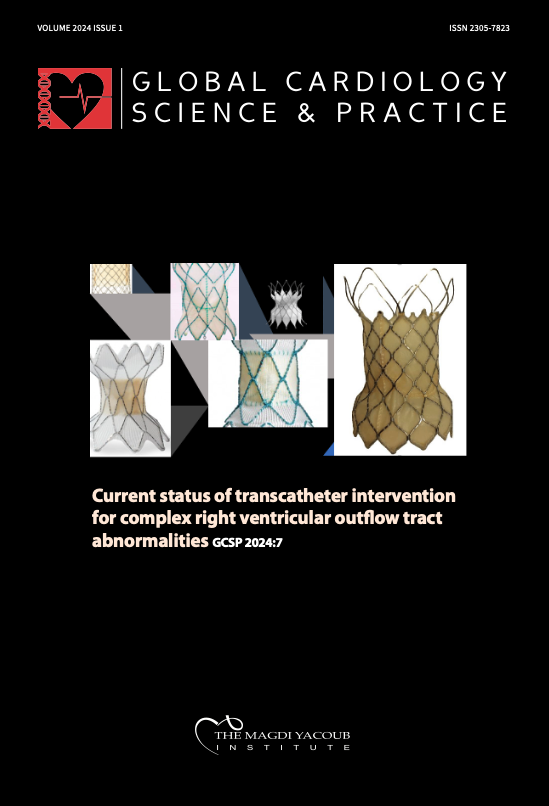Current status of transcatheter intervention for complex right ventricular outflow tract abnormalities
DOI:
https://doi.org/10.21542/gcsp.2024.7Abstract
Various transcatheter interventions for the right ventricular outflow tract (RVOT) have been introduced and developed in recent decades. Transcatheter pulmonary valve perforation was first introduced in the 1990s. Radiofrequency wire perforation has been the approach of choice for membranous pulmonary atresia in newborns, with high success rates, although complication rates remain relatively common. Stenting of the RVOT is a novel palliative treatment that may improve hemodynamics in neonatal patients with reduced pulmonary blood flow and RVOT obstruction. Whether this option is superior to other surgical palliative strategies or early primary repair of tetralogy of Fallot remains unclear. Transcatheter pulmonary valve replacement has been one of the biggest innovations in the last two decades. With the success of the Melody and SAPIEN valves, this technique has evolved into the gold standard therapy for RVOT abnormalities with excellent procedural safety and efficacy. Challenges remain in managing the wide heterogeneity of postoperative lesions seen in RVOT, and various technical modifications, such as pre-stenting, valve ring modification, or development of self-expanding systems, have been made. Recent large studies have revealed outcomes comparable to those of surgery, with less morbidity. Further experience and multicenter studies and registries to compare the outcomes of various strategies are necessary, with the ultimate goal of a single-step, minimally invasive approach offering the best longer-term anatomical and physiological results.
Downloads
Published
Issue
Section
License
Copyright (c) 2023 Yoshiyuki Kagiyama, Damien P. Kenny, Ziyad M. Hijazi

This work is licensed under a Creative Commons Attribution 4.0 International License.
This is an open access article distributed under the terms of the Creative Commons Attribution license CC BY 4.0, which permits unrestricted use, distribution and reproduction in any medium, provided the original work is properly cited.


